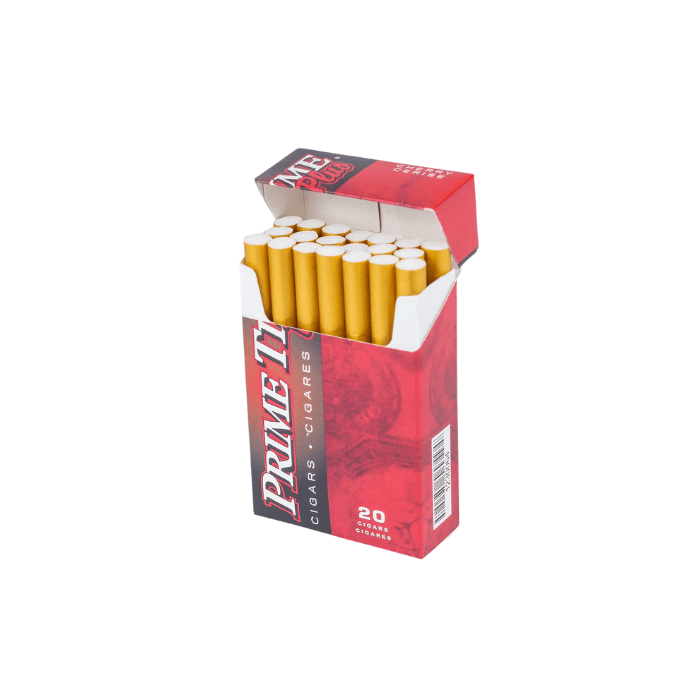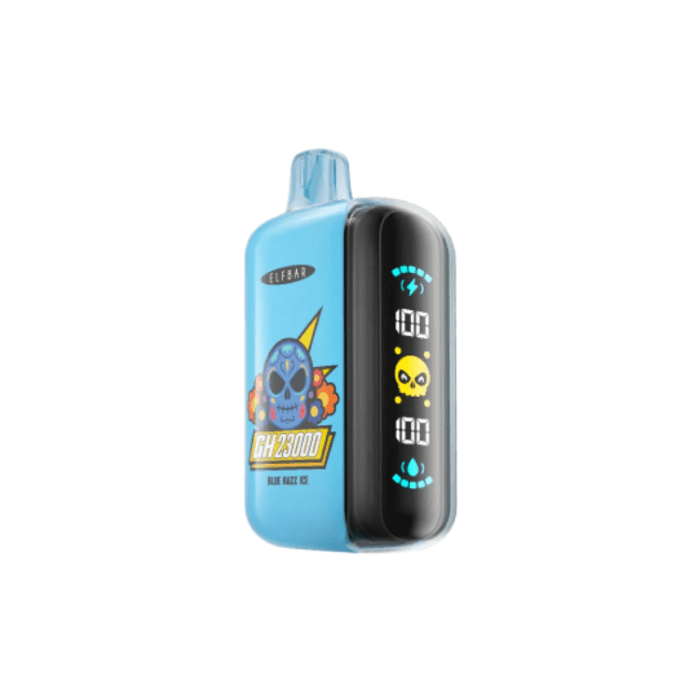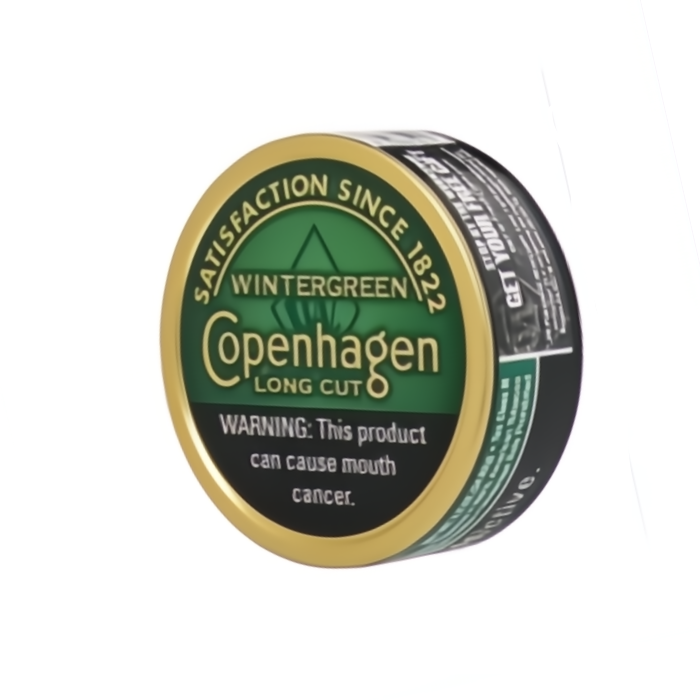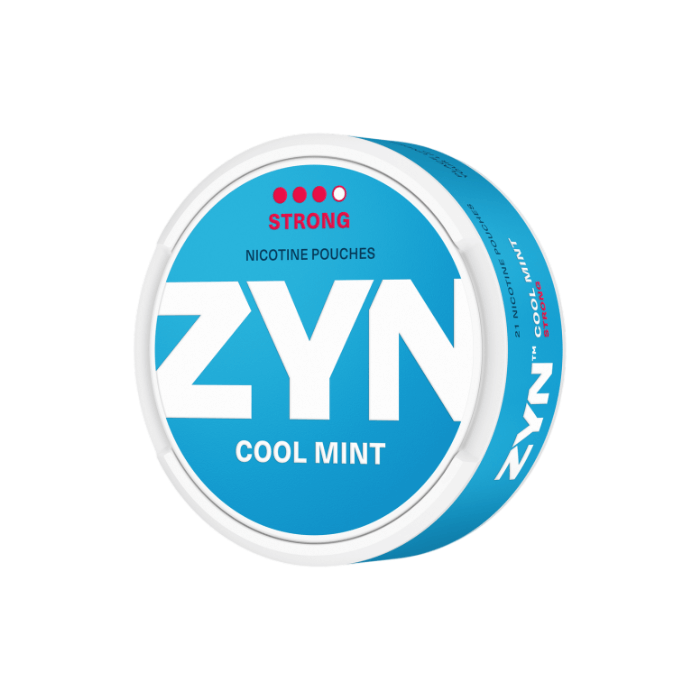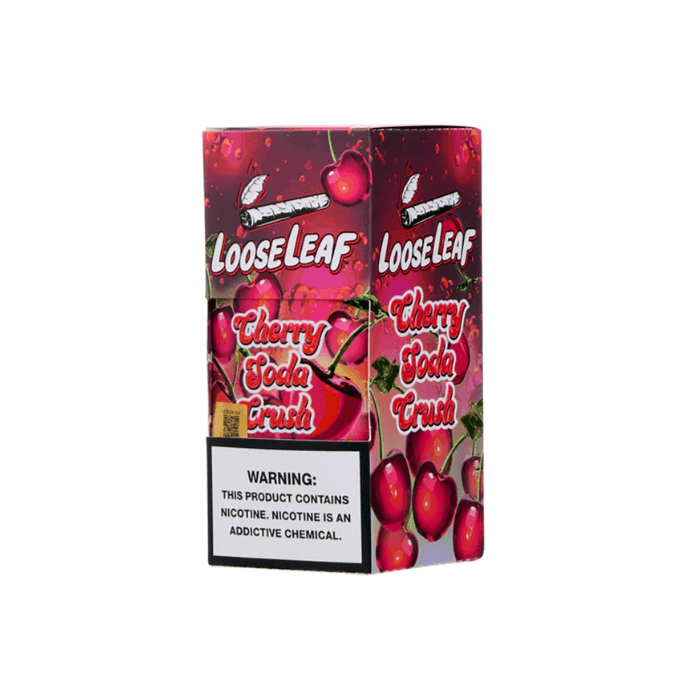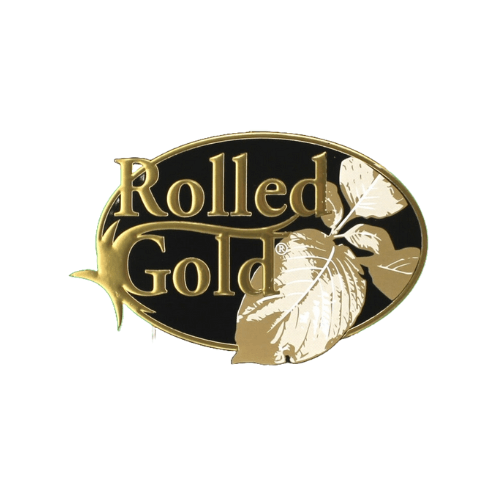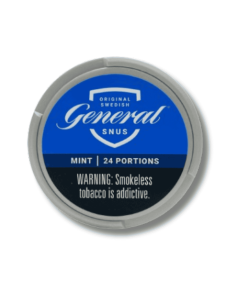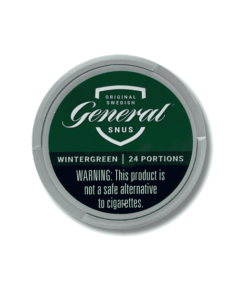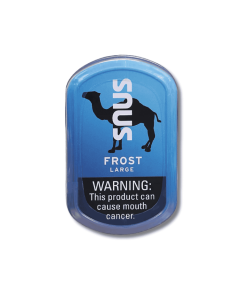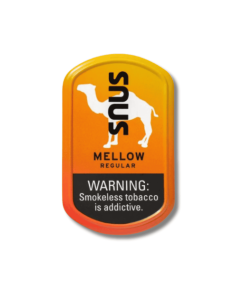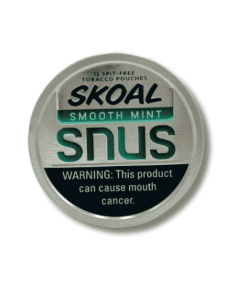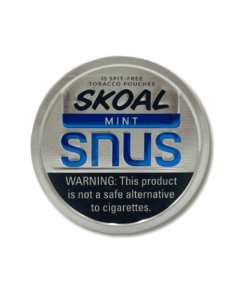Comparisons, Cigarettes, Snus
How Much Nicotine in Snus vs Cigarettes
Many smokers and nicotine users still rely on tobacco and nicotine products as their main source of nicotine, making it one of the most widely consumed psychoactive substances in the world. And despite the dominance of cigarettes as the main source of tobacco use, alternative smokeless tobacco products such as snus have likewise captured the interest of nicotine users out there.
Here in Canada, cigarettes are considered the most common form of tobacco use, with many cigarette smokers opting for these combustible tobacco products instead of alternative nicotine products. Some of them, however, have since shifted to smokeless tobacco products to make their nicotine intake less harmful. This shift, however, leads to questions about the nicotine content of tobacco products.
How much nicotine is in snus compared to cigarettes? How does the body absorb nicotine from each tobacco option? And does one deliver more to the bloodstream than the other? Native Smokes 4 Less is here to answer these questions and give you a detailed comparison of how these products differ.
Snus vs Cigarettes Nicotine Content
When comparing snus to cigarettes, you might assume that it’s just a matter of checking how many milligrams of nicotine each contains. But in reality, nicotine content alone doesn’t tell the full picture since absorption rates, delivery mechanisms, and user habits all influence how much nicotine actually ends up in the bloodstream. Fortunately, a good starting point is to understand the raw numbers.
A standard cigarette generally contains between 8 and 20 milligrams of nicotine, with most cigarettes today falling around the 10 to 12 milligram range. A smoker, however, doesn’t absorb all of that nicotine whenever they smoke. On average, only about 1 to 2 milligrams from each cigarette actually enters the bloodstream. It may sound like a small fraction, but it is enough to create a strong, fast-acting effect.
The inhalation route of consuming nicotine is known to be highly efficient. Hence, it’s the reason why cigarettes are so addictive despite the relatively modest absorbed dose of nicotine per stick.
Snus, on the other hand, tends to vary much more in nicotine concentration. Traditional Swedish smokeless tobacco products like snus pouches typically contain anywhere from 8 to 22 milligrams of nicotine per portion. Some standard pouches tend to hover around the lower end of the scale, while strong or extra strong varieties may exceed 20 milligrams per pouch.
Moisture content and pH level all play a role in determining the final nicotine level of snus that your body may absorb. The nicotine content of a wetter snus can be extracted quickly, increasing its overall potency. In alkaline conditions, the nicotine from the snus may also be absorbed faster. Additionally, the portion size of snus matters since mini pouches may contain and provide less overall nicotine content, while large or max pouches may provide substantially more thanks to their higher surface area.
Another key point of difference lies in the proportion of nicotine that becomes bioavailable.
In cigarettes, the nicotine content is mostly burned and carried into the lungs, with a relatively small percentage absorbed compared to the total nicotine content. On the other hand, snus works differently. When placed under the lip, nicotine leaches into the saliva and then into the bloodstream through the mucous membranes in the mouth. Because of this, the proportion of nicotine absorbed from snus can actually be higher, especially in strong products with higher pH levels that release more nicotine.
To put this in perspective: a cigarette may contain 12 mg of nicotine but only deliver 1 to 2 mg of nicotine to the bloodstream. A snus pouch, alternatively, might contain 15 mg of nicotine and deliver 3 to 6 mg depending on strength and duration of use. This means a single snus pouch can provide as much or even more nicotine than smoking multiple cigarettes.
Of course, the overall nicotine consumption experience differs.
Cigarettes deliver nicotine in sharp, quick bursts, peaking in the bloodstream within minutes. Snus delivers nicotine more gradually, often over 30 to 60 minutes, resulting in a steadier but sometimes higher overall uptake. This makes it difficult to compare the two tobacco products on a strict mg-to-mg basis. For instance, you might be smoking a cigarette for a quick nicotine hit but use a snus pouch for a longer-lasting effect that doesn’t require you to step outside or inhale tobacco smoke.
Another layer of complexity comes from branding and product design.
Cigarettes tend to be more standardized in nicotine content, with most brands offering fairly similar delivery levels per stick. Snus, however, comes in a wide range of strengths and portion sizes, giving users far more variation in how much nicotine they may consume in a single session.
So, while both cigarettes and snus truly contain significant amounts of nicotine, the way they deliver the said substance differs dramatically. Cigarettes can often provide a rapid, lower-dose hit, while snus can offer a slower, sometimes larger total dose.
Nicotine Uptake From Snus
Now, understanding nicotine uptake involves not just assessing how much nicotine a snus pouch contains, but how much nicotine actually enters the bloodstream and over what time frame.
Studies suggest that approximately 10 to 20 percent of the nicotine in a single snus pouch is absorbed into the bloodstream. This means that from a pouch with, say, 10 mg of nicotine, the user may absorb between 1 and 2 mg, amounts that are comparable to or slightly higher than the typical absorption from a single standard cigarette.
Some products, however, contain notably higher nicotine contents. For example, stronger white pouch varieties have been made to provide a more powerful nicotine effect than standard snus. Users of such stronger tobacco products may absorb more nicotine in the same way due to their higher total content and similar absorption percentages.
The rate of nicotine uptake, as mentioned earlier, depends on the product’s pH and moisture content. A higher pH increases the proportion of free nicotine, which is the form of nicotine that is most readily absorbed by the body. Moisture levels likewise influence how quickly nicotine is released into saliva and passes through the mucous membranes in the mouth.
This means that two products with the same nicotine content may deliver very different user experiences based on how they are formulated.
User reports and laboratory studies both confirm that the nicotine delivery from snus is more gradual rather than in one rapid burst.
Typically, a significant portion of the nicotine, which is around 70 percent, is absorbed into the body within the first hour, with the remainder continuing to release slowly for up to three or four hours. A pouch with a higher pH and more free nicotine will release its contents more quickly, often being fully absorbed within 90 minutes, whereas standard snus with a lower pH takes longer.
To put this into practical terms, a standard snus pouch containing 10 mg of nicotine might yield about 1 to 2 mg absorbed into the bloodstream over the course of two to three hours. A stronger snus pouch that contains 20 mg or more may deliver closer to 3 to 4 mg, depending on duration of use and how it is formulated. The gradual release means that instead of a sharp peak, the nicotine level rises steadily and maintains a plateau before tapering off.
This pattern of nicotine absorption explains why snus is typically described as providing a smoother, longer-lasting effect compared to cigarettes. A smoker inhales nicotine that reaches the brain in just a few seconds, peaking quickly and then falling as the cigarette ends. Snus delivers nicotine more slowly, but maintains levels for a much longer time.
For many users, this reduces the need for frequent dosing and provides a more stable nicotine experience throughout the day.
Daily patterns of nicotine use also play a huge role. If you keep a snus pouch in your mouth for 30 to 60 minutes at a time, you may absorb a moderate dose of nicotine several times per day. Alternatively, if you use a strong portion or keep one in your mouth for a longer duration, you may absorb significantly higher amounts of nicotine overall.
Nicotine Absorption: Snus vs Cigarettes
To see how cigarettes and snus differ, you may want to know about their respective nicotine absorption. While both products deliver the same substance, they do so in very different ways, creating unique experiences for users and influencing patterns of dependence.
Cigarettes rely on fast lung delivery, while snus uses slower absorption through the mouth, and within snus itself, the type of portion, such as modern Swedish snus or traditional loose snus, also makes a significant difference.
Cigarettes provide a rapid route into the bloodstream. When smoke is inhaled, nicotine passes through the lungs and reaches the brain in as little as 10 to 20 seconds. Each cigarette contains roughly 8 to 20 mg of nicotine, but because of combustion and exhalation, only a small part actually reaches the bloodstream, which is about 1 to 2 mg. This produces an immediate but short-lived nicotine spike, followed by a decline, which explains why smokers tend to light up repeatedly throughout the day.
This is also the reason why many cigarette smokers are exposed to many health risks due to their exposure not only to nicotine but also to carbon monoxide, tar, and other cancer-causing or carcinogenic chemicals. Some health risks associated with cigarette smoking include cardiovascular disease, lung cancer, increased blood pressure and heart rate, and many more.
Snus, on the other hand, works on a slower and steadier scale. Instead of being inhaled, a pouch or loose portion is placed under the upper lip. The nicotine will then be absorbed through the oral mucosa. The absorption process is gradual. Blood nicotine levels rise over 20 to 30 minutes, then remain steady for one to two hours before vanishing.
Around 10 to 20 percent of the nicotine in a pouch is absorbed, which means a typical portion of snus with 10 mg of nicotine will yield about 1 to 2 mg. Stronger products, often labelled as extra strong Swedish snus, can deliver closer to 3 to 4 mg or more, depending on how long the pouch is consumed.
Within the world of snus, the type of portion also plays a role.
Swedish snus is often considered the benchmark because of its long history and regulatory standards that limit harmful compounds. It is made in portioned sachets or in loose form. Portion snus, which comes in pre-packed pouches, is easy to use, discreet, and offers consistent nicotine levels. Loose snus, alternatively, is a traditional form where users pinch a portion of moist tobacco and place it under the lip. Because loose snus makes direct contact with a larger surface area in the mouth and can be shaped to fit, many users find that it delivers nicotine slightly faster and sometimes more intensely than portioned snus. This makes it popular among experienced users seeking a stronger kick.
Some snus products are available at Native Smokes 4 Less, your trusted online retailer of both combustible and smokeless tobacco products at very reasonable prices.
Now, the user’s experience depends on product choice and habits. For example:
- Standard Swedish portion snus may take longer to release nicotine, but provides steady delivery for up to two hours.
- White portion snus contains lower moisture, which means it releases nicotine more slowly but lasts longer, offering a mild and extended effect.
- Loose snus typically provides faster release of nicotine and can feel stronger, especially if kept in place for a longer period.
The way nicotine is absorbed also influences daily behaviour.
Smokers need to smoke cigarettes frequently to keep nicotine levels stable because each dose fades quickly. Snus users, particularly those using Swedish snus or strong loose snus, may only need a handful of portions per day, as each one provides a long-lasting effect.
However, because some products contain high nicotine levels, heavy users of strong or loose snus may still end up absorbing more nicotine overall than someone smoking a pack of cigarettes.
Total Daily Nicotine Uptake: Cigarettes vs Snus
When comparing how much nicotine someone absorbs over the course of a typical day, the difference between cigarettes and snus becomes particularly clear once we look past raw nicotine content and consider absorption efficiency and usage patterns.
Cigarette smokers often consume a pack a day, with each cigarette containing approximately 10 to 12 milligrams of nicotine. However, only about 1 to 2 milligrams is absorbed into the bloodstream, which adds up to roughly 20 to 40 milligrams absorbed per pack, assuming a 20-cigarette pack and typical uptake rates.
Traditional snus and even nicotine pouches, alternatively, deliver nicotine more efficiently. Recent findings show that modern nicotine pouches, especially those with very high nicotine levels, can lead to a higher absorbed dose than even a cigarette, with peak blood levels and total exposure significantly exceeding those achieved by smoking.
Laboratory comparisons of nicotine absorption across products highlight that certain strong snus variants, particularly loose snus with higher nicotine content, produce greater systemic exposure than cigarettes. For instance, a loose snus portion containing around 27 milligrams of nicotine achieved higher nicotine concentrations and total exposure than a cigarette, while standard portioned snus with mid-level nicotine still matched or exceeded cigarette absorption in some metrics.
Putting this into context for daily use:
- A smoker who finishes a pack of 20 cigarettes absorbs around 20 to 40 mg of nicotine per day.
- An average snus user consuming 5 to 8 standard pouches might absorb anywhere from 5 to 16 mg, depending on pouch strength and absorption efficiency.
- Users of strong loose snus or high-dose pouches (20 mg or more) may be absorbing significantly more, potentially matching or exceeding cigarette users, since each pouch may deliver several milligrams on its own, and multiple pouches per day can add up quickly.
Additional factors influence total intake:
- Absorption from the snus is typically slower but more sustained. Keeping a pouch in for 30 to 60 minutes, or even longer, leads to longer-lasting nicotine exposure and may reduce the need for frequent dosing, unlike smoking cigarettes.
- Cigarettes produce sharp spikes in nicotine with quick declines, resulting in more frequent use throughout the day.
- The nicotine release efficiency is higher for snus, particularly when formulation features like pH and moisture enhance free nicotine absorption.
When viewed at a daily level, the gap narrows but becomes more nuanced. You see, cigarette users get quick hits repeatedly, attaining total uptake that is concentrated in small bursts. And while snus users may absorb modest amounts per pouch, their bodies can sustain nicotine levels across hours. Using strong or loose variants can even push total daily absorption even higher.
While cigarette smokers may absorb a sizable daily nicotine dose, heavy snus users, especially those using powerful loose snus or ultra-strong pouches, can rival or exceed that intake due to both the efficiency of absorption and the cumulative effect of multiple portions. The difference lies in the pattern: abrupt peaks versus smooth, sustained exposure.
Frequently Asked Questions
Which has more nicotine, cigarettes or snus?
Cigarettes typically contain around 10 to 12 milligrams of nicotine each, but only 1 to 2 milligrams are absorbed into the bloodstream. Alternatively, snus portions may contain 8 to 22 milligrams, and depending on strength, can deliver 3 to 8 milligrams of nicotine per pouch. This means that, in terms of actual absorbed nicotine, snus often provides more than a cigarette.
How much snus is equivalent to a cigarette?
A standard cigarette delivers roughly 1 to 2 milligrams of nicotine. A regular snus pouch may deliver 3 to 5 milligrams, while a strong one may deliver even more. Therefore, a single portion of snus can equal or exceed the nicotine uptake of one to three cigarettes, depending on strength and duration of use.
Does snus have a lot of nicotine?
Yes, snus can contain a significant amount of nicotine. While not all of it is absorbed, the total nicotine delivery is often higher than that of a cigarette. The exact amount depends on the brand and strength, but stronger snus products are designed to provide higher doses, sometimes delivering several times the nicotine of a cigarette.
Summary
Nicotine delivery from cigarettes and snus differs not only in speed but also in efficiency and overall daily intake. Cigarettes contain around 10 to 12 mg of nicotine each, yet smokers absorb only 1 to 2 mg per stick due to combustion loss and exhalation. A pack-a-day smoker, therefore, takes in about 20 to 40 mg of nicotine daily, typically in short, sharp peaks that fade quickly, leading to frequent re-dosing.
Snus, especially Swedish snus, provides a slower but more sustained release through absorption in the oral mucosa. Standard portioned snus usually delivers 1 to 2 mg of nicotine per pouch, while stronger products and loose snus can deliver 3 to 4 mg or more. But because of the longer-lasting effect, users may consume fewer servings per day. However, those who choose extra-strong or loose snus, or who keep portions in place longer, can absorb higher overall doses than a cigarette smoker.
So, if you want to somehow reduce your overall tobacco intake, it’s best that you opt for snus. Snus is considered to be a more predictable and discreet alternative, especially if you want to switch for health reasons. Even better, you can go for nicotine pouches. Nicotine pouches deliver nicotine without the harmful effects of tobacco since they are free from the said leaves. You can find all these tobacco and nicotine products at Native Smokes 4 Less, your trusted online store in Canada.


